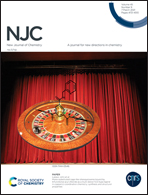Synthesis of carbon dot-ZnO-based nanomaterials for antibacterial application†
Abstract
ZnO-based antibacterial materials have attracted significant attention in academia and industry. However, there are still many challenges: (1) their severe agglomeration leads to their active sites being masked; (2) the surface area of the micron-sized particles in contact with the target decreases; (3) pure ZnO shows poor dispersibility in water. Herein, a CD/ZnO/ZnAl2O4 composite was fabricated via the hydrothermal treatment of a histidine (his)-intercalated layered double hydroxide (LDH). The mechanism shows that the LDH confinement structure could immobilize and disperse the intercalated organic small molecules and prevent the resulting CD from agglomerating. The hydrothermal method simultaneously allowed the host and guest to undergo the corresponding transformation, that is, LDH to ZnO/ZnAl2O4 and CD. In addition, the use of LDH as the precursor prevented the aggregation of ZnO. The as-prepared CD/ZnO/ZnAl2O4 composite showed excellent antibacterial properties within a safe concentration range for human cells, where the antibacterial ratio against S. aureus reached 97% and against E. coli reaches 94%. Therefore, this research provides a potential economic approach in the field of antibacterial coatings and pharmaceutical packaging due to the antibacterial sensitivity of the CD/ZnO/ZnAl2O4 nanocomposite.



 Please wait while we load your content...
Please wait while we load your content...